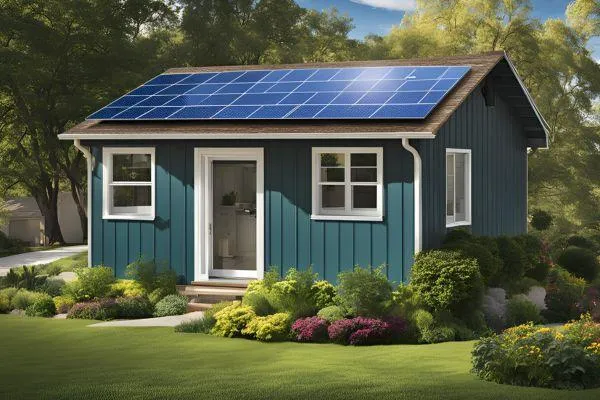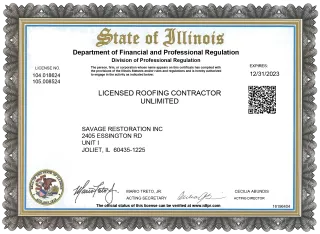BLOGS
Don’t be AVERAGE. Be SAVAGE.

The Evolution of Net Metering in 2025: What You Need to Know
The Evolution of Net Metering in 2025: What You Need to Know
As we look towards 2025, significant changes are on the horizon for net metering policies across various regions. Net metering, a pivotal mechanism that has empowered countless individuals and businesses to generate renewable energy and offset their electricity costs, is undergoing shifts that could reshape the landscape of sustainable energy adoption. Let's explore what these changes entail, their potential impact, and how they might influence the future of renewable energy.
Understanding Net Metering
Net metering allows energy consumers with renewable energy systems, such as solar panels or wind turbines, to feed excess electricity back into the grid. This surplus electricity is credited to their utility bills, offsetting the cost of electricity drawn from the grid when renewable sources are insufficient. It has been a cornerstone policy in promoting renewable energy adoption, offering economic incentives and environmental benefits to participants.
Changes on the Horizon
1. Transition to Value-Based Pricing
One of the significant shifts anticipated in net metering policies is the transition from retail rate credits to value-based pricing mechanisms. Historically, net metering has provided credits at the retail rate, essentially compensating energy producers for the electricity they generate at the same price they would pay for electricity from the grid. However, in 2025 and beyond, there is a movement towards implementing value-based pricing. This approach aims to more accurately reflect the value of distributed energy resources (DERs) to the grid and society as a whole.
2. Time-of-Use Rates and Tariffs
Another trend emerging in net metering policies is the adoption of time-of-use rates and tariffs. These pricing structures vary the cost of electricity based on the time of day and demand on the grid. By aligning credits for excess generation with these time-varying rates, utilities can better manage grid stability and encourage energy consumption during off-peak hours. This shift incentivizes consumers to adjust their energy usage patterns to maximize savings and grid efficiency.
3. Programmatic Changes and Incentives
In addition to pricing adjustments, net metering programs are evolving to incorporate new incentives and programmatic changes. Some regions are enhancing support for energy storage systems paired with renewable energy generation, promoting grid resilience and flexibility. Others are exploring community solar initiatives that allow multiple consumers to share the
benefits of renewable energy generation, even if they cannot install systems on their own properties.
Impact on Consumers and the Energy Landscape
1. Economic Considerations
For consumers, the transition to value-based pricing and time-of-use rates can impact the financial returns of renewable energy investments. While these changes may reduce the immediate payback period for solar and other DER installations, they also reflect a broader recognition of the grid services provided by distributed generation. Consumers may need to adjust their energy consumption behaviors or consider additional investments in energy management technologies to optimize savings.
2. Grid Integration and Resilience
From a grid perspective, evolving net metering policies aim to enhance integration of renewable energy sources while maintaining grid stability and reliability. By incentivizing distributed generation and storage, utilities can manage peak demand more effectively, reduce transmission losses, and enhance overall grid resilience against disruptions and climate impacts.
3. Policy and Regulatory Landscape
The evolution of net metering policies in 2025 also reflects ongoing policy and regulatory developments at both the state and federal levels. Policymakers are balancing the interests of consumers, utilities, and environmental advocates to ensure equitable access to renewable energy benefits while addressing grid management challenges and economic considerations.
Looking Ahead
As we anticipate these changes in net metering policies in 2025, it's clear that the renewable energy landscape is evolving towards greater efficiency, resilience, and sustainability. Consumers and stakeholders in the energy sector must stay informed about these developments, evaluate their implications, and actively participate in shaping future energy policies and investments.
In conclusion, the changes in net metering policies anticipated in 2025 represent a significant step towards aligning renewable energy incentives with grid realities and societal benefits. By embracing value-based pricing, time-of-use rates, and innovative programmatic changes, stakeholders can foster a more robust, equitable, and sustainable energy future. As we navigate these transitions, the importance of informed decision-making and collaborative efforts cannot be overstated in driving the next phase of renewable energy adoption and grid modernization.
REAL CUSTOMER REVIEWS
As seen by the client testimonials listed below, Savage Roofing, Inc. adheres to the highest standards set by the sector. In every project, we treat our clients as partners by keeping them informed and soliciting their feedback at every stage of the building process. We work together to create a finished service that satisfies and beyond the demands of our customers.
Terrific customer service. We called three other companies and none of them were as thorough as Savage Exteriors ! They explained what was needed and the length required to get it completed. Job was done in a timely manner and the cleanup by the workers was amazing. We were truly pleased with a beautiful job and highly recommend this company. Amazing job!
Erica M.
Joliet ILVery friendly and helpful as they were able to come to me and sit down to explain my options. Very professional while working with insurance to make sure I could get the best deal possible. Really felt like my best interests was their priority, and they produce awesome work. Daniel and Diego are really good guys.
- CARL G.
Joliet ILExtremely happy with the work done by Savage exteriors. I actually had neighbors comment on how beautiful my roof looks. Daniel Maldonado , the owner, was always available and quick to respond. Daniel and his team are very dependable and honest group. I would recommend in a heart beat
- JODY W.
Joliet ILSavage exteriors was Excellent in every way. I highly recommend Savage Roofing. They show up on time, have great communication, and do quality work. Everyone is professional and courteous. Full cleanup. I am very satisfied with my new roof
- JIMMY K.
Joliet IL
Don’t be AVERAGE.
Be SAVAGE.
Roofing Contractor Licenses
#104.018624 & #105.008524
Our team is licensed and certified to provide top-quality roofing services.
We hold the following licenses:
Roofing License #104.018624 Roofing License #105.008524 These licenses ensure that we are qualified and trained to handle any roofing job with professionalism and expertise in the State of Illinois

Explore Site
Type of Services
Useful Links
Location
Office:
1815 Knapp Rd Crest Hill, IL 60403
Contact Info
Phone:
E-mail:

